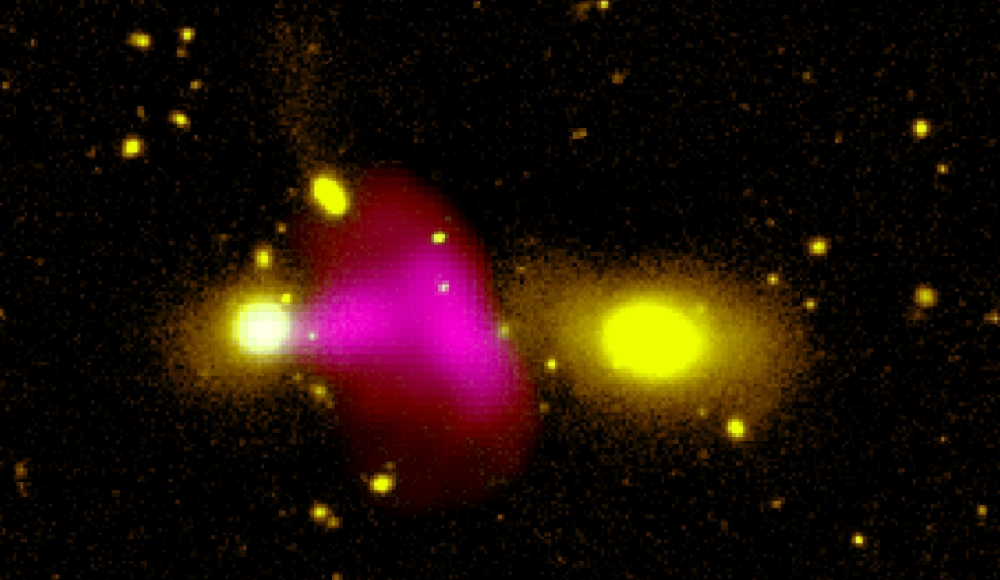A one-of-a-kind cosmic jet spans over 440,000 light-years!
Key Takeaways:
- RAD12’s black hole fires a plasma jet straight into neighboring galaxy RAD12-B, an unprecedented discovery.
- This solo jet stretches over 440,000 light-years, impacting galaxy mergers and star formation.
- Astrophysical jets typically come in pairs, making RAD12’s one-sided jet a cosmic mystery.
- The system sheds light on how black holes influence galaxy evolution by expelling star-forming gas.
- Citizen scientists contributed to this discovery through the RAD@home Indian research initiative.
________
A Cosmic Jet Unlike Any Other
For the first time, astronomers have observed a black hole in one galaxy directing a jet of plasma straight into a neighboring galaxy. This extraordinary system involves the galaxy RAD12 and its companion RAD12-B, located approximately 1 billion light-years from Earth. The event, discovered in 2013, gained confirmation through advanced observations using India’s Giant Metrewave Radio Telescope (GMRT) and South Africa’s MeerKAT radio telescope.
Unlike typical astrophysical jets, which appear in pairs and move at relativistic speeds, RAD12’s black hole ejects a single jet. The jet’s structure spans over 440,000 light-years, longer than RAD12 itself, and impacts RAD12-B. Observations revealed fresh plasma extending from RAD12’s core, while older plasma forms a mushroom-shaped cap beyond, completing the massive structure.
Implications for Galaxy Evolution
This rare cosmic interaction provides new insights into how supermassive black holes influence star formation. Plasma jets can drive out cold gas, which acts as the building blocks of stars, thus quenching star formation. This mechanism, known as radio jet feedback, plays a critical role during galaxy mergers. The ongoing collision between RAD12 and RAD12-B makes the system an ideal laboratory for studying such feedback processes.

Led by Ananda Hota from the University of Mumbai, the research highlights the importance of global collaboration and citizen science. The RAD@home initiative engaged thousands of students and amateur astronomers, contributing significantly to the findings.
Unsolved Mysteries
The lopsided nature of RAD12’s jet remains puzzling. Why the black hole emits only one jet, rather than the usual pair, is a question scientists aim to resolve with future observations. This discovery not only deepens our understanding of astrophysical jets but also paves the way for studying galaxy mergers and black hole dynamics on a larger scale.
By combining data from various telescopes and citizen science efforts, this groundbreaking study underscores the complex interactions that govern cosmic evolution and highlights the power of collaborative research.
The team’s work was published in the journal Monthly Notices of the Royal Astronomical Society: Letters.



